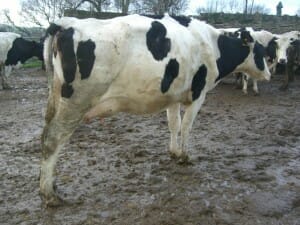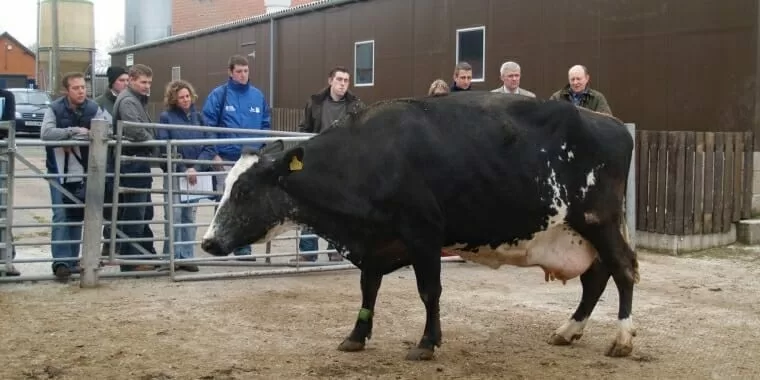By Marcia Endres, University of Minnesota Extension Dairy Scientist
Two recent conferences in the upper Midwest focused on the topic of dairy welfare: the I-29 Dairy Conference in Sioux Falls and the Wisconsin Dairy and Beef Animal Husbandry Conference. We have been hearing more and more about dairy welfare in our industry. This is a societal issue that is here to stay.

Lameness was on the agenda at the I-29 conference. Jan Shearer, extension veterinarian at Iowa State, indicated that lameness is today the most costly disorder in dairy herds surpassing mastitis. It reduces milk production, impairs reproduction, and can result in premature culling and death. In the context of the three areas that comprise welfare – animal health and functioning, natural behavior, and affective states (pain, distress) suggested by Fraser (animal welfare expert at the University of British Columbia) – lameness fails in every one of them. A lame cow has impaired performance, can’t walk naturally and interact with her peers, and is certainly in a lot of pain. Therefore, the most important economic disorder in our dairy farms is also on the top of dairy welfare concerns.
It is possible to achieve low prevalence of lameness on farms. Our studies at the University of Minnesota have demonstrated that the average prevalence of lameness can vary from 6.5 to 30% depending on the housing system evaluated. On an individual farm basis, lameness prevalence ranged from 0% (yes, 0%) to 60%. It is not acceptable to be at that higher end of the scale. It is possible to have less than 10% of severe lame cows, preferably less than 5%. To achieve this goal we have to work on many aspects of the dairy operation as lameness is a multi-factorial disorder.
Cow handling has been identified as one of the factors that can contribute to lameness in cattle. Handling cattle in a quiet and slow manner doesn’t cost anything. There is no capital investment. Improving cattle handling will not solve the lameness problem by itself, but ways must be found to improve the situation.
Temple Grandin, animal welfare expert at Colorado State, talked about the relationship between fear and milk production in dairy cows at the I-29 conference. If cows are fearful of humans, milk production can be reduced by 10%. Grandin said that cows do not recognize human faces; they recognize places, smells, voices, distinctive clothing, and certain objects. Cows have long term memory, so it is important for a heifer to have a good experience the first time she enters a milking parlor. Something new can be both scary and attractive to cattle depending on how it is presented. If cattle are allowed to voluntarily approach something new (not forced), they will not be scared and will become accustomed to the object. One of the first signs of stress in cattle is when we can see the whites of their eyes. Another sign would be tail swishing when no flies are present. Grandin suggested that it could even be beneficial to hire someone to pet and handle calves. At a minimum, the person taking care of calves should be calm and nurturing. As the heifers get older, a person could walk in their pens every day to calm them further. This person could wear the same clothing as the milkers do (for example, a yellow apron). Then the heifers will associate milker clothing with a good experience so when they go to the milking parlor for the first time, they can be calmed by the sight of a familiar, nice, safe person.
At the Wisconsin conference, Naomi Botheras, animal welfare extension specialist at Ohio State, talked about the relationship between animal handling and productivity. She indicated that consistent negative relationships have been found between fear of humans and productivity in dairy, swine and poultry operations. High levels of fear of humans can result in animals fleeing, panicking, packing together or resisting, resulting in difficult sorting, increased likelihood of slips and falls, with consequent problems such as increased lameness prevalence and premature culling. At the same conference, Curt Pate, National Cattlemen’s Association, gave a live cattle handling demonstration. He made it look so easy, but it takes practice and understanding of cattle behavior to calmly move and sort animals like he did. We don’t need to use our arms, or yell, or be frantic, only understand flight zones and pressure points to move cattle.
Two take-home messages from these conferences: 1. Even though progress has been made, lameness continues to be one of the most important economic and welfare issues on dairy farms today. We need to continue to work on reducing risk factors for lameness. 2. Negative animal handling can have important consequences on productivity and well-being. We need to work with cattle in a calm and quiet manner. Good handling doesn’t cost anything. Let’s do it!

